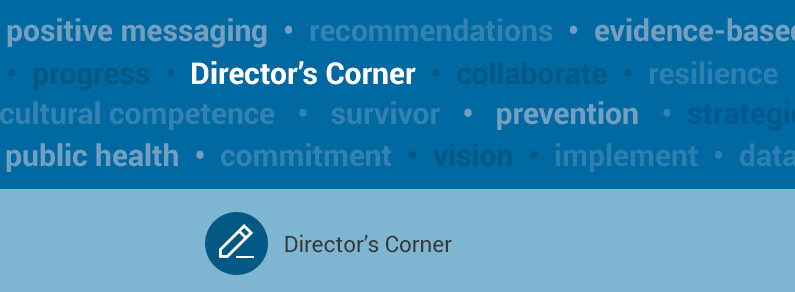After participating in ICRC-S’ Training Institute, epidemiologists in KY began an assessment process to compare YRBS survey data concerning suicide attempts resulting in medical treatment with data from counts of hospital and emergency department visits for intentional self-injury from billing records, poison center calls and EMS encounters. Initial results indicate a discrepancy.
Resource Types: Article/Chapter
Preventing violent deaths and addressing health disparities for transition-aged youth (ages 10 to 24) in Texas
Research supports the concept that drug use and multiple forms of intentional injury are inter-related. ICRC-S’ Training Institute helped Texas stakeholders explore ways to identify communities at highest risk and promote collaboration on existing programs to address suicide and other forms of violent death among adolescent African Americans and Whites in Texas.
Speaking the same language: Developing culturally-informed messages about firearm safety
Researchers at Oregon State University (OSU) – Cascades noted that many rural firearm suicide decedents visited their primary care physician within a year of their death. With this in mind, they collaborated with LaPine Community Health Center primary care providers and those at risk of suicide and their family members, about voluntarily limiting access to firearms. With grant and training support from ICRC-S, they developed a brochure for those at risk of suicide and their family members and friends and a research brief/tip sheet for primary care providers on the do’s and don’ts of having an effective conversation with a patient about limiting access to firearms.
Adverse childhood experiences and suicide risk: Toward comprehensive prevention
Although seldom the focus of suicide prevention efforts, adverse childhood experiences (ACEs), including child abuse and neglect, are well-documented risk factors for suicide. This article provides an overview of prevention strategies and comprehensive programs that address ACEs and suicide.
Training healthcare providers and social workers in suicide prevention: A tale of three universities
The National Strategy for Suicide Prevention called for all physicians to be educated in suicide prevention. Despite that, physicians and social workers receive minimal education and training in that area. Three teams participating in ICRC-S’ Training Institute provide descriptions of their suicide education and training programs, two for physicians and one for social workers.
Newsletters of the Tennessee Suicide Prevention Network
This webpage contains links to the newsletters of the Tennessee Suicide Prevention Network from January 2012 to the present. As of April, 2017 their three newsletters have merged into one.
Entrepreneurship education: A strength-based approach to substance use and suicide prevention for American Indian adolescents
This paper describes the development and evaluation of a youth entrepreneurship education program in partnership with one American Indian (AI) community. It details the curriculum, process evaluation results, and the randomized controlled trial evaluating its efficacy for increasing protective factors. Lessons learned may be applicable to other AI communities.
Citation: American Indian and Alaska Native Mental Health Research. 2016 Sep 1;23(3):248-270.
Director’s Corner: Postvention as Prevention

In this guest post, Ken Norton, LICSW, executive director of the New Hampshire chapter of the National Alliance on Mental Illness, describes the effects that a suicide death can have on others.
Healing of the canoe: Preliminary results of a culturally grounded intervention to prevent substance abuse and promote tribal identity for native youth in two Pacific Northwest tribes
This article describes a culturally grounded social skills intervention to promote increased cultural belonging and prevent substance abuse among tribal youth using the Canoe Journey as a metaphor for life. It was associated with increased hope, optimism, and self-efficacy and with reduced substance use, as well as with higher levels of cultural identity and knowledge about alcohol and drugs among high school-age tribal youth.
State participation in the Medicaid expansion provision of the affordable care act: Implications for uninsured individuals with a behavioral health condition
The ACA expands Medicaid coverage to adults below 138 percent of the Federal Poverty Level (FPL) (i.e., $15,856 for an individual or $26,951 for a family of three in 2013). However, a June 2012 Supreme Court decision allowed states to opt out of Medicaid expansion.4 As of April 2015, 29 states, including the District of Columbia, were participating in Medicaid expansion, 6 states were undecided, and 16 states were not participating.5,6 In states that do not expand Medicaid or are undecided, many individuals may remain uninsured. This report compares estimates of Medicaid-eligible uninsured individuals with a behavioral health disorder living in Medicaid expansion, non-Medicaid expansion, and undecided states.
